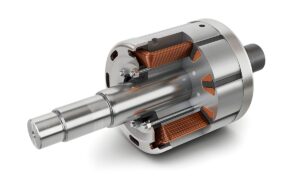At its Ontario Medical Center in Southern California, Kaiser Permanente is installing a microgrid that includes a 2.2-megawatt solar array, a 9.5-megawatt-hour zinc hybrid battery, and a state-of-the-art controller. This follows an earlier microgrid installation at Kaiser’s Richmond Medical Center, a smaller project that combined 1 megawatt of battery storage with the installation of on-site 250 kilowatt solar panels on the roof of the hospital’s parking garage (see Image 1).
The CEC’s description of the Ontario project highlights the need for more evidence that microgrids can meet the stringent requirements of the healthcare environment that would justify investment in a system based on renewable energy sources, in particular “everyday energy, greenhouse gas reduction and energy” . Storage that can provide long-term support for a facility, especially during power outages. It will be compared directly to the Richmond project on multiple factors, and in terms of critical backup power capacity, the ability to serve approximately 100% of hospital loads for 12 hours or more will be tested.
As a leader in the healthcare industry in prioritizing environmentally focused clean energy solutions, Kaiser sees microgrid projects as vital to expanding the industry’s search for new ways to operate energy-reliant facilities at a time of heightened risk and uncertainty.
“Because of the climate crisis, we are facing more and more weather-related disasters, which can also impact grid reliability,” says Seth Baruch, national director of energy and public utilities at Kaiser. “Therefore, hospitals and other public services must develop better and more flexible options to maintain operations.”
He says that microgrids could be the solution to mitigate the effects of disasters that affect the availability of grid power, in a way that better protects the environment than relying on diesel generators.



